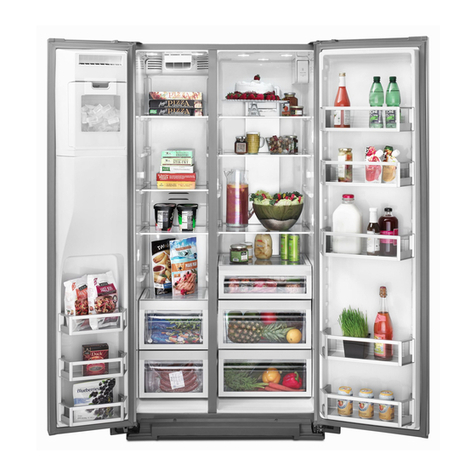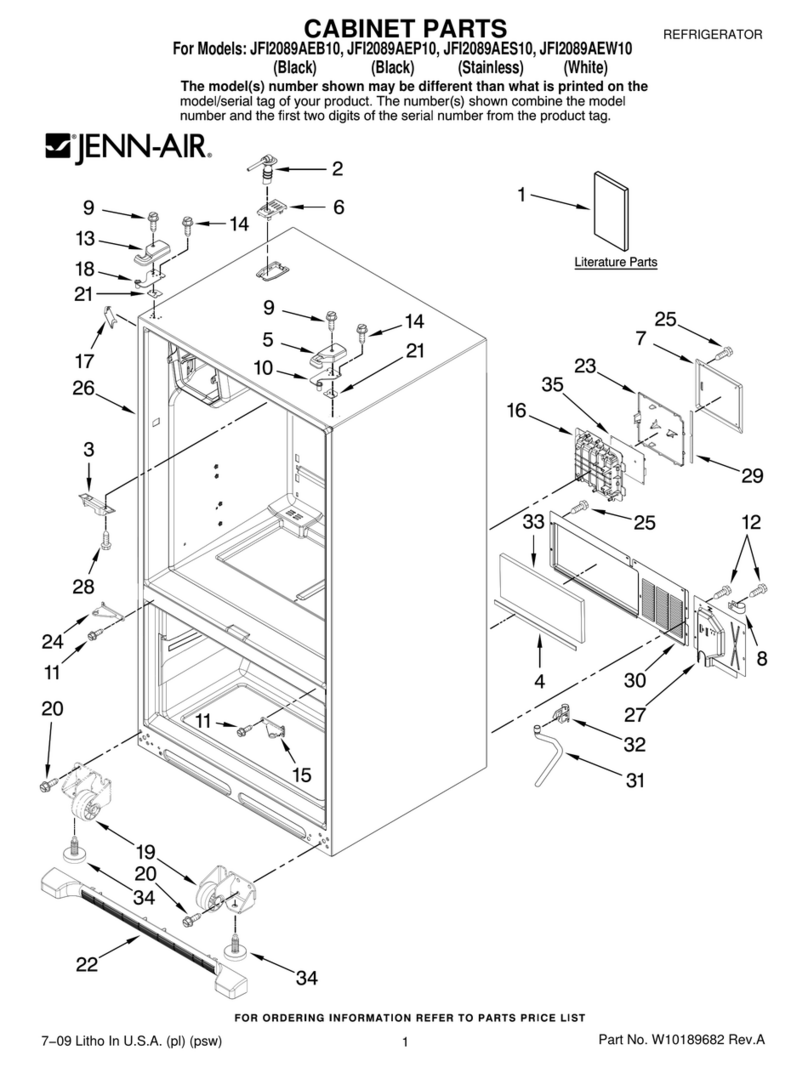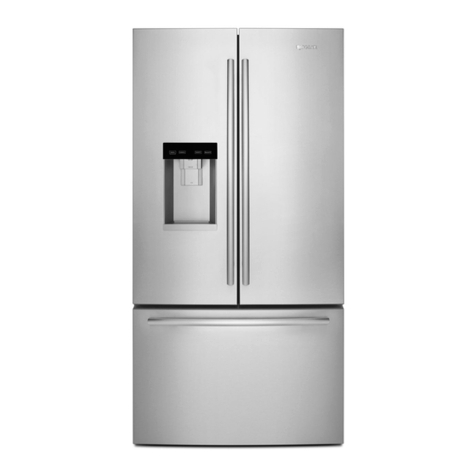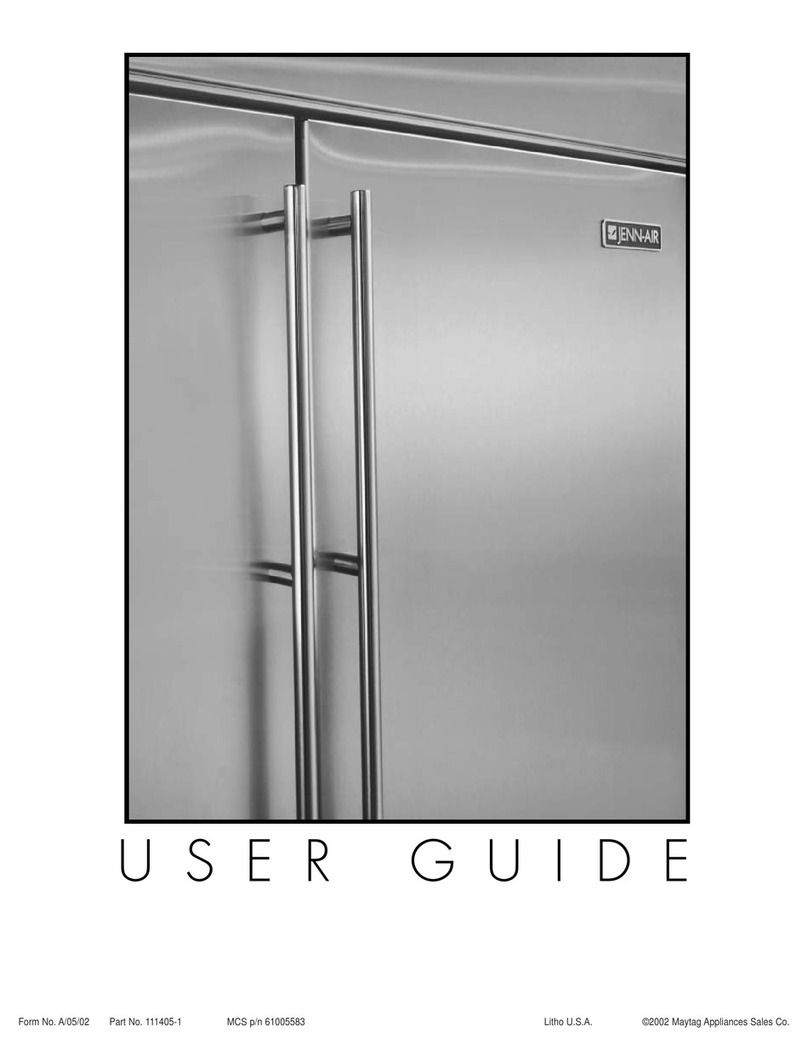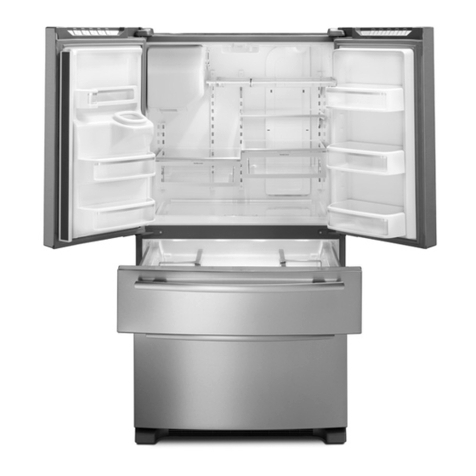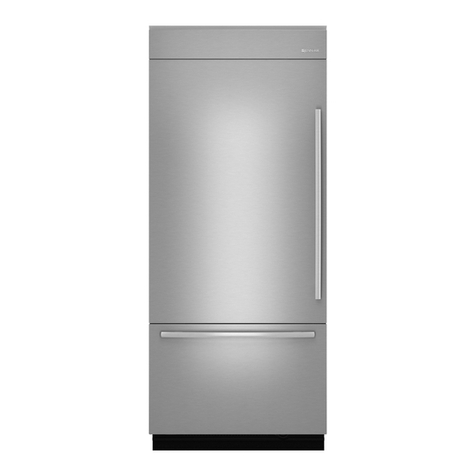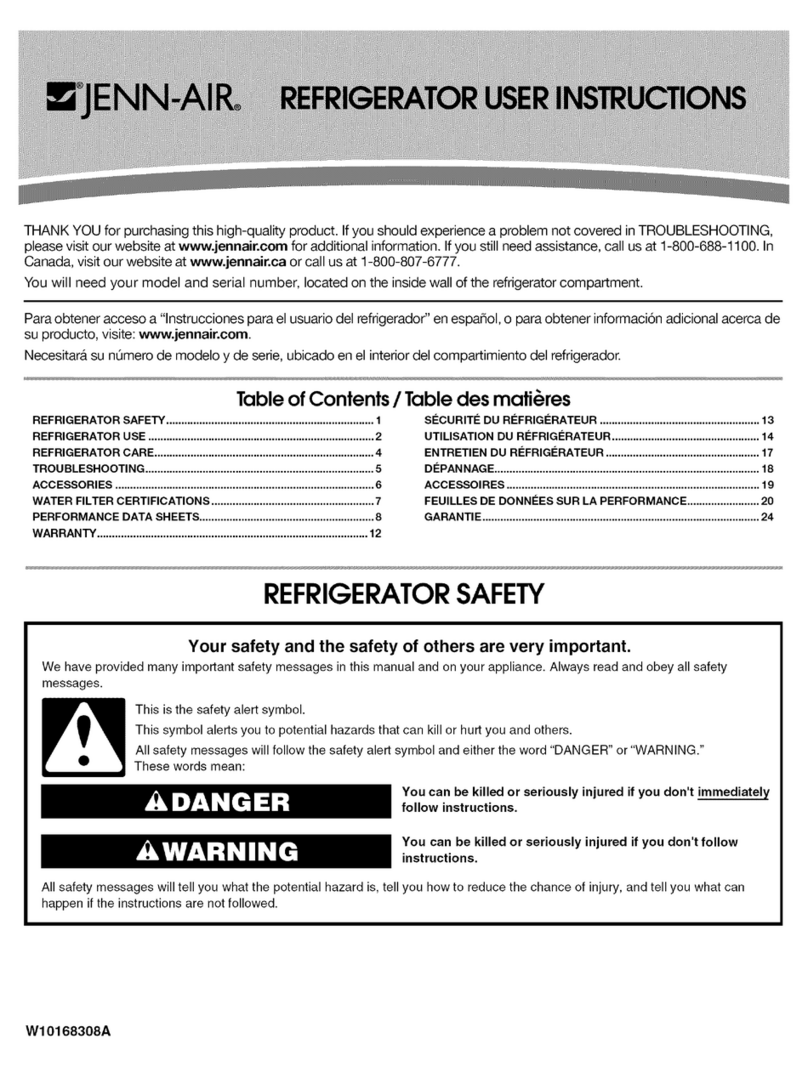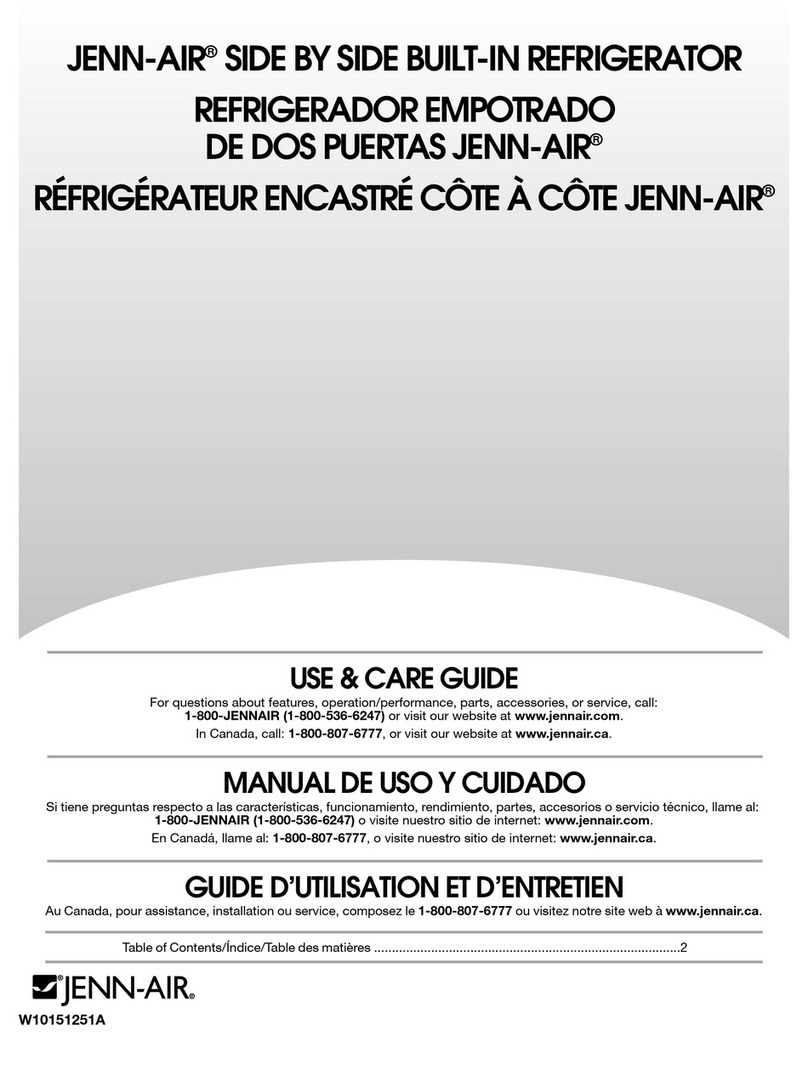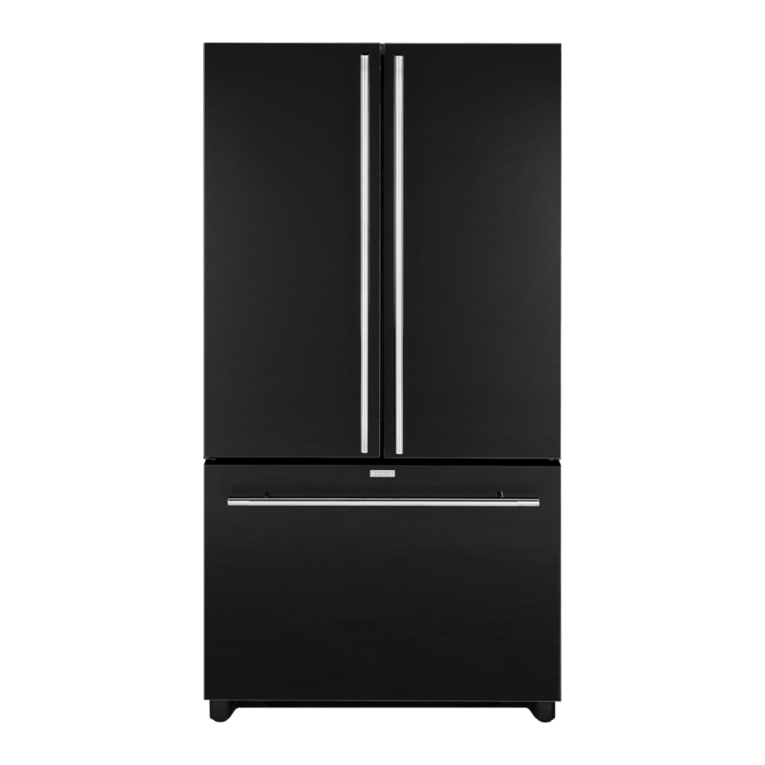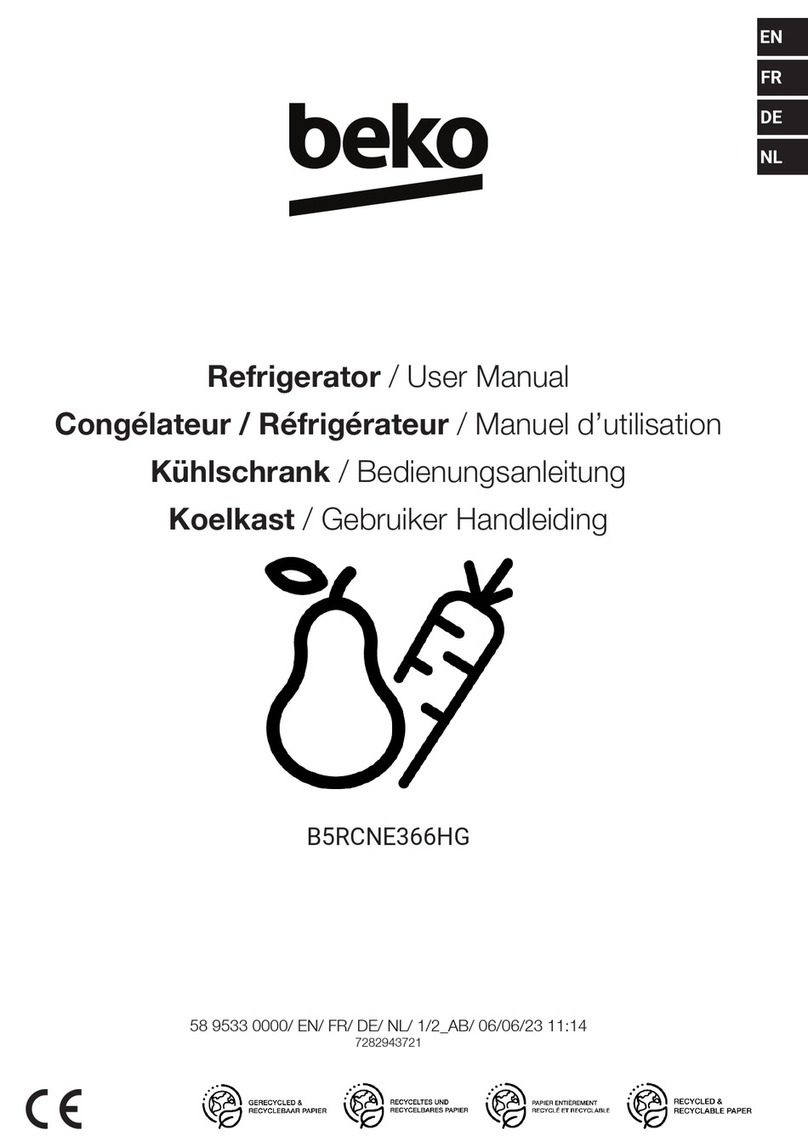
16021730 Rev. 0 8
Open Lines
During any pr cessing f refrigerati n system, never
leave lines pen t atm sphere. Open lines all w water
vap r t enter system, making pr per evacuati n m re
difficult.
Dehydrating Sealed Refrigeration System
M isture in a refrigerat r sealed system exp sed t
heat generated by the c mpress r and m t r reacts
chemically with refrigerant and il in the system and
f rms c rr sive hydr chl ric and hydr flu ric acids.
These acids c ntribute t breakd wn f m t r winding
insulati n and c rr si n f c mpress r w rking parts,
causing c mpress r failure.
In additi n, sludge, a residue f the chemical reacti n,
c ats all surfaces f sealed system, and will
eventually restrict refrigerant fl w thr ugh capillary
tube.
T dehydrate sealed system, evacuate system (see
paragraph Evacuation).
Leak Testing
DANGER
!
T av id risk f seri us injury r death fr m vi lent
expl si ns, NEVER use xygen r acetylene f r
pressure testing r clean ut f refrigerati n
systems. Free xygen will expl de n c ntact with
il. Acetylene will expl de sp ntane usly when put
under pressure.
It is imp rtant t check sealed system f r refrigerant
leaks. Undetected leaks can lead t repeated service
calls and eventually result in system c ntaminati n,
restricti ns, and premature c mpress r failure.
Refrigerant leaks are best detected with halide r
electr nic leak detect rs.
Testing Systems Containing a Refrigerant Charge
1. St p unit perati n (turn refrigerat r ff).
2. H lding leak detect r expl ring tube as cl se t
system tubing as p ssible, check all piping, j ints,
and fittings.
NOTE: Use s ap suds n areas leak detect r cann t
reach r reliably test.
Service Procedures
T av id risk f electrical sh ck, pers nal injury, r death, disc nnect electrical p wer s urce t unit, unless test
pr cedures require p wer t be c nnected. Discharge capacit r thr ugh a 10,000 hm resist r bef re attempting
t service. Ensure all gr und wires are c nnected bef re certifying unit as repaired and/ r perati nal.
WARNING
Testing Systems Containing No Refrigerant Charge
1. C nnect cylinder f nitr gen, thr ugh gauge
manif ld, t pr cess tube f c mpress r and liquid line
strainer.
2. Open valves n nitr gen cylinder and gauge manif ld.
All w pressure t build within sealed system.
3. Check f r leaks using s ap suds.
If a leak is detected in a j int, d n t t attempt t repair
by applying additi nal brazing material. J int must be
disassembled, cleaned and rebrazed. Capture refrigerant
charge (if system is charged), unbraze j int, clean
allparts, then rebraze.
If leak is detected in tubing, replace tubing. If leak is
detected in either c il, replace faulty c il.
Restrictions
Symptoms
Restricti ns in sealed system m st ften ccur at
capillary tube r filter drier, but can exist anywhere n
liquid side f system.
Restricti ns reduce refrigerant fl w rate and heat
rem val rate. Wattage dr ps because c mpress r is
n t circulating n rmal am unt f refrigerants.
C mm n causes f t tal restricti ns are m isture,
p rly s ldered j ints, r s lid c ntaminants. M isture
freezes at evap rat r inlet end f capillary tube. S lid
c ntaminants c llect in filter drier.
If restricti n is n l w side, sucti n pressure will be in a
vacuum and head pressure will be near n rmal.
If restricti n is n high side, sucti n pressure will be in
a vacuum and head pressure will be higher than n rmal
during pump ut cycle.
Refrigerati n ccurs n l w pressure side f partial
restricti n. There will be a temperature difference at the
p int f restricti n. Fr st and/ r c ndensati n will be
present in m st case at the p int f restricti n. Als ,
system requires l nger t equalize.
Slight r partial restricti n can give the same
sympt ms as refrigerant sh rtage including l wer than
n rmal back pressure, head pressure, wattage, and
warmer temperatures.
T tal restricti n n the discharge side f c mpress r,
when restricti n is between c mpress r and first half f
c ndenser, results in higher than n rmal head pressure
and wattage while l w side is being pumped ut.

